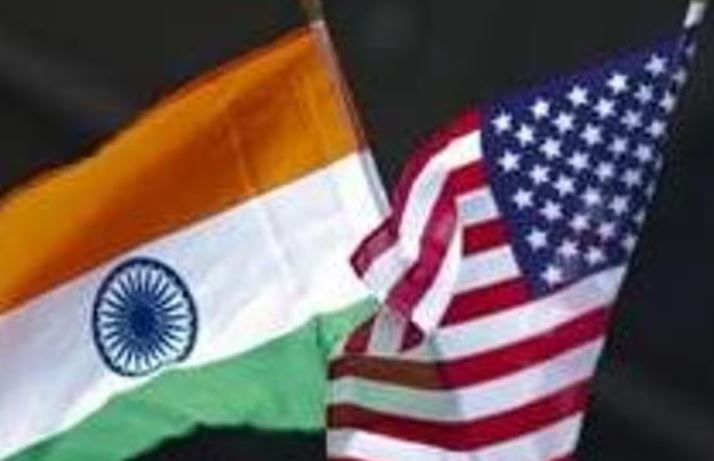
Since 2014, Indian Prime Minister Narendra Modi has made multiple bilateral and multilateral trips to the US, but from June 21 to June 24, he will be in the US on an official state visit.
The visit by PM Modi is being hailed as a significant turning point in the relationship between the two democracies. Notably, a Republican Speaker has asked the Indian Prime Minister to address the joint session of Congress, while a Democratic President has invited him to a state dinner at the White House, demonstrating bipartisan support for enhancing US-Indian relations.
In order to challenge China’s rising dominance, President Biden has prioritised strengthening defence ties with India and offered to work together on military technology.
US Defence Secretary Lloyd Austin was in India on a two-day visit in order to set the basis for highly anticipated agreements on bilateral defence cooperation, particularly in areas of transfer of vital technologies for co-development of military hardware.
Secretary of State Antony Blinken stated at the India Ideas Summit in Washington, sponsored by the US-India Business Council, that the US engagement with India promotes security, creativity, and prosperity for both nations.
Calling Indian Prime Minister Narendra Modi’s state visit to the US as “historic,” Blinken said, “We’re here almost literally, on the eve of what we believe will be a historic state visit by Prime Minister Modi – one that will further solidify what President Biden has called a ‘defining relationship’ of the 21st century.”
He added that India-US ties are centered on economic linkages and that the two nations are working together to design future technologies and the rules regulating them.
As a precursor to Prime Minister Modi’s state visit to the US, the Confederation of Indian Industry (CII) held a ‘Roundtable on Advancing India-US Initiative on Critical & Emerging Technologies (iCET)’ at which Mr. Ajit Doval, India’s National Security Adviser and Jake Sullivan, Assistant to the US President for National Security Affairs, shared their views on upcoming technologies & partnerships for their fast adoption.
Sullivan said, “As we look ahead to the state visit Prime Minister Modi will be embarking upon in Washington next week… a number of the deliverables at the visit are not just bullet points on a page.” “They are fundamentally designed to remove those obstacles in defense trade, in high-tech trade, in investment in each of our countries, in taking away obstacles that have stood in the way of our scientists and researchers.”
A major development during the state visit will be the signing of a reciprocal defense procurement agreement with the US to qualify to be recognized as a DFARS-compliant country.
Once the bilateral reciprocal defense procurement agreement is inked, it would lead to India getting a waiver from the application of the “Buy American Act,” which prevented the US Government from procuring supplies from a foreign country.
The facilitation of joint intellectual property development is a key stumbling block in how defense cooperation between India and the United States can develop further, and if this can be facilitated by joint intellectual property development between the entities on both sides, it will be a major ballast to cooperation on emerging technology.
Among some of the big ticket announcements during Modi’s State visit are likely to be the development of a joint satellite mission to co-develop core technology and create a white list for technology transfer between the two countries.
In advanced materials, the opportunity areas for collaboration that are being explored include energy storage, the development of materials, fibers, and hydrogen production and storage. Additive manufacturing access to powder manufacturing and hot isostatic pressing technology, particularly from the medical implants perspective, is another area where we might see collaboration.
Semiconductors are likely to be a key area of cooperation and also a strategic requirement. The need for creating a talent corridor and facilitating its exchange program to deepen collaboration in technology innovation in the semiconductor industry will likely see progress.
Biotechnology is now a critical sector, and it has been decided that harmonization capacity building is required in areas of disease surveillance, benchmarking of regulatory service delivery, and information exchanges of centers of excellence in various cutting-edge scientific discoveries.
Collaboration in the telecom sector indicates the need to develop innovation corridors for joint research and chip innovations. Forward movement is likely in the creation of structural frameworks for supply chain cyber security and technology access.
One of the most important results of the ICET was the commencement of negotiations on the General Electric (GE) deal to produce GE-F414 jet engines in India, complete with technology transfer.
In February this year, the historic deal between Boeing and Air India for the latter to buy more than 200 planes from the American plane manufacturer was announced. Air India is ordering 220 Boeing aircraft valued at $34 billion.
The orders include 190 737 Max aircraft, 20 of Boeing’s 787s, and 10 of its 777Xs. The purchase also includes customer options for an additional 50 737 MAXs and 20 of its 787s, totaling 290 airplanes for a total of $45.9 billion at the list price.
India’s acquisition of 31 drones from General Atomics for just over $3 billion, which also includes maintenance, refurbishment, and repair of the platforms, is one of the other significant defence agreements that are anticipated to be completed during this trip.
The ‘Sea Guardian’ high altitude long endurance UAV can fly up to 40,000 feet in altitude and has a maximum endurance of 40 hours. It has a multi-mode marine surface search radar that is optional, as well as a 360-degree maritime surveillance radar.
With or without a formal trade deal, India and the US are working together in organisations like the QUAD and Indo-Pacific economic framework, and there is now a stronger emphasis on essential and developing technology.
The “defence innovation bridge,” which has garnered a lot of support from both governments, will be supported by technology.
(WITH INPUT SOURCE)

















